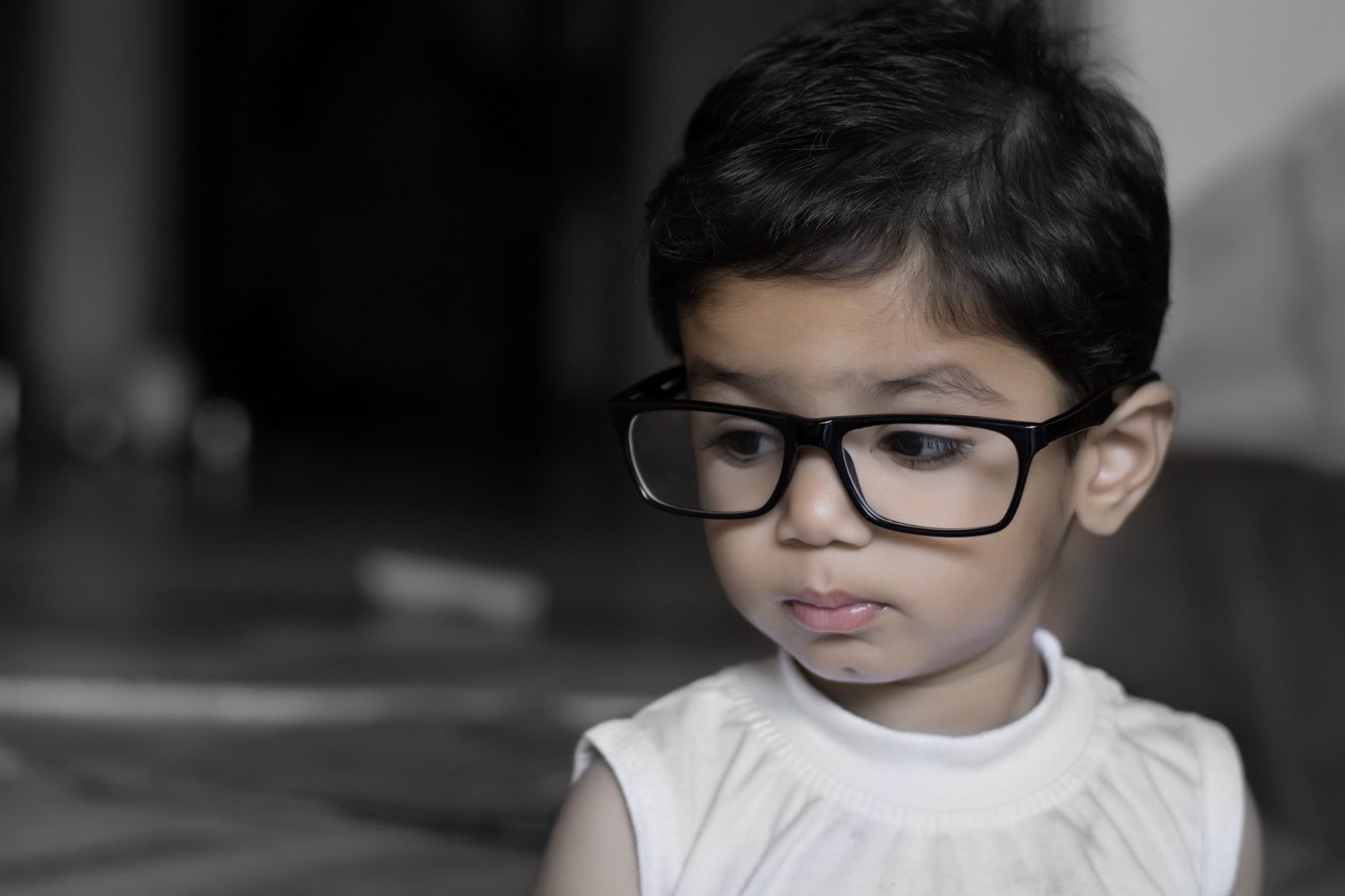How to Control the Progression of Myopia in Children (+What to Do Now)
Has your child recently been diagnosed with myopia?
Often called nearsightedness, myopia is a vision condition which causes your child to see objects clearly when they’re close, but objects in the distance appear blurry.
Your child may squint when he or she watches TV, or they may have a harder time reading the board at school.
They may even report having headaches or eye fatigue from their eyes working so hard to focus on what’s not near or in sight all the time.
While you’re taking steps to correct your child’s myopia now, you’re probably wondering how you can slow the progression or maybe even cure their myopia altogether.
Left untreated, myopia can lead to high myopia, which may have devastating consequences for your child in adulthood. They may be more likely to develop cataracts, glaucoma, macular degeneration, retinal detachment, and even blindness.
So can you control myopia? Are their treatment options to reduce myopia naturally?
We’ll cover all this and more today.
What is Myopia, What Causes Myopia, and How Did My Child Get to be Nearsighted?
Even though close to 40% of the US population has myopia, the causes of this condition are still unknown to doctors.
We know myopia occurs when your child’s eyes develop and become just a bit too long or their corneas become too curved.
As a result of this irregularity, light that enters their eyes doesn’t focus correctly and objects in the distance lose their sharp edges.
But how did your child’s eyes get that way?
There’s significant evidence to show that children have a higher likelihood of developing myopia if one of their parents is nearsighted.
Other studies show that children who spend less time outdoors develop myopia more often than those who get the chance to play in their backyard 24/7.
This may be one reason there are more myopic children growing up in urban environments and in certain Asian countries than those in more rural locales.
There are even scientists who believe that your child’s circadian rhythm — or the natural biological clock regulating their sleep and wake schedule — has a role to play in a nearsightedness diagnosis.
For now, let’s assume myopia developed in your child as a result of any or all of these factors.
If It Seems Like More Kids are Nearsighted Today, It’s Because They Are
The number of children with myopia is on the rise worldwide.
According to a recent study published in the journal Opthalmology, 50% of the world’s population will be myopic by 2050.
Researchers blame environmental factors (like urbanization and less outdoor time) and the rise of technology (the advent of computers, the internet, and mobile devices) for this increase in myopia.
These activities are very much near-sighted work and show no signs of vanishing from your child’s life anytime soon.
So is there anything you can really do?
How to Slow the Progression of Myopia in Children
Myopia is usually first detected before your child finishes grade school, but his or her eyes will continue to develop until they’re in college (and in their early 20s).
This means their prescriptions for distance may get stronger as they age.
While there’s currently no cure for myopia, there are a few preventions you can start now to keep your child’s condition from progressing quickly, such as:
Medicated Drops and Topical Gels
Certain anti-muscarinic medications have been studied for children with myopia.
One review showed that children receiving pirenzepine gel, cyclopentolate eye drops, or atropine eye drops had significantly less myopic progression after one year compared to children who were given a placebo in the same studies.
Before you jump for joy, this news isn’t all great.
Side effects of medications like these include blurry near vision, light sensitivity, and mild discomfort. Plus, the long term effects of these drugs are unknown so many doctors are hesitant to prescribe them.
Additional studies have shown that treatment options like these don’t work as well after the first year and make a poor choice (so far) for sustained nearsightedness treatment.
Orthokeratology Contact Lenses
While normal contact lenses can be used to correct nearsightedness in the present, Ortho-K contact lenses are gas-permeable contact lenses that your child wears overnight.
When worn, these lenses slowly change the curve of your child’s cornea. Specifically, they flatten and reshape the corneal contour, which reverses the way your child’s eyes currently focus light.
As Christina Newman, OD, FAAO, writes for Optometry Times, “It has been theorized that this cuts off the signal for the eye to elongate as it would normally” in myopic patients.
Reverse geometry contact lenses like Ortho-K are not currently approved by the FDA for myopia control.
However, researchers believe treatment with these types of lenses is no less safe than wearing other standard types of contact lenses.
And since close to 4 million kids and teens wear contacts these days, the future of using these lenses for myopia control doesn’t seem too far off.
You May Be Tempted to Undercorrect — But Don’t!
Nearsightedness is most commonly treated with corrective eyeglasses using single-vision lenses.
The lenses in your child’s glasses are curved so they refocus the light that enters their eyes. Instead of light going in front of the retina, it’s directed onto it.
When parents get nervous about their child’s prescription getting stronger each year, they may be tempted to ask their optometrist about under-correcting.
This is commonly thought to strengthen your child’s eyes so they don’t rely on or “get comfortable” with higher prescriptions in the future.
Unfortunately, it doesn’t quite work like that.
Undercorrection of myopia has been shown to increase nearsightedness in multiple studies.
On average, children wearing undercorrected lenses progressed 0.15 D more than children wearing the correct single-vision prescription lenses in just one year.
Consider Bifocals or Multifocal Lenses Instead
Single-vision lenses use the same prescription to fill the whole lens.
Bifocals split the lens in two prescriptions (like one for distance and one for reading) and multifocals split it even further (like adding a prescription for computer work).
The benefit of multifocal lenses for myopia is that they provide different strengths in the same lens.
So children who don’t have trouble reading up close won’t be required to wear a strong prescription constantly when they only need help seeing at a distance.
A review of seven studies showed that children wearing multifocal lenses progressed an average of 0.16 D less than children wearing single-vision lenses after one year.
Schedule More Outside Time
And now for the natural way to slow the progression of myopia.
Three studies showed that children who spend more time outdoors reduce the chances of their myopia progressing than those cooped indoors.
In fact, just one extra hour outside correlated with a 2% decrease in their odds of their myopia getting worse.
So just like you may have to schedule band practice and homework time, make sure to pencil in outside activities for your child.
The Secret to Myopia Control is Catching it Early
Even though myopia presents itself early in your child’s life, many children simply won’t admit that they have vision problems or need glasses.
But the best way to control the progression of myopia in children is catching it early.
Start with routine eye exams before they enter preschool and schedule them annually.
Keep a close watch of your child’s vision if your child’s siblings also have myopia or other vision problems (or either parent does).
Now that you know about the possible environmental factors that may cause or worsen myopia — such as a decrease in time spent outdoors and an increase in close-vision work — you can take proactive steps to counteract these factors in your child’s life.
Maybe one day scientists will give us a cure for myopia, but all you can do now is try to slow its progression for your child.




Comments
Leave a Comment